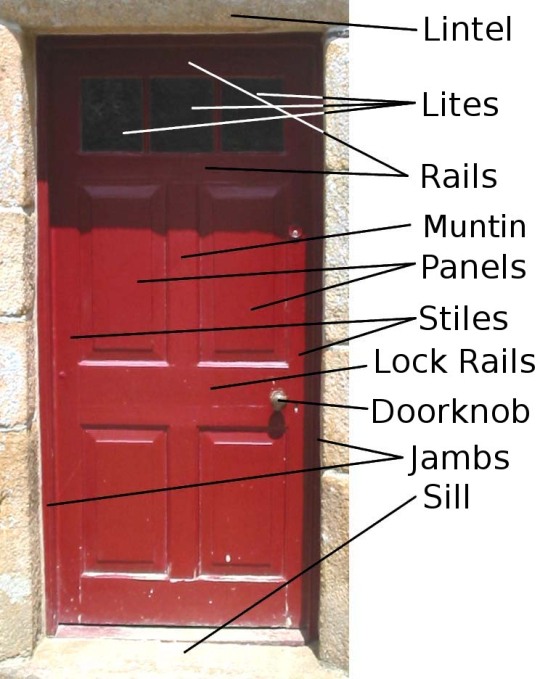Text
I am a(n):
⚪ Male
⚪ Female
🔘 Writer
Looking for
⚪ Boyfriend
⚪ Girlfriend
🔘 An incredibly specific word that I can't remember
411K notes
·
View notes
Text
Limitations breed creativity
Avatar: Magic is limited to the four elements (and some spirit stuff). Furthermore, everyone except the Avatar is limited to at most just one element.
The magic battles are spectacular displays of creativity where each element is utilized to its full potential in a variety of ways.
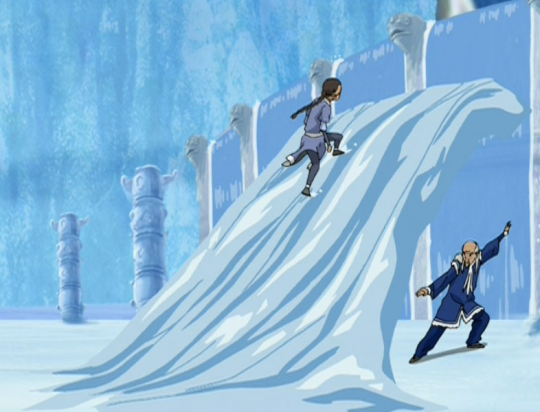
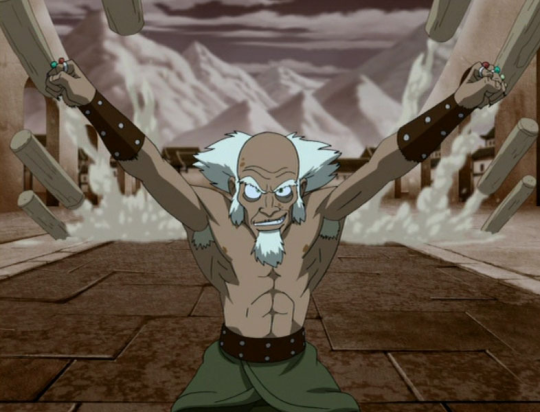
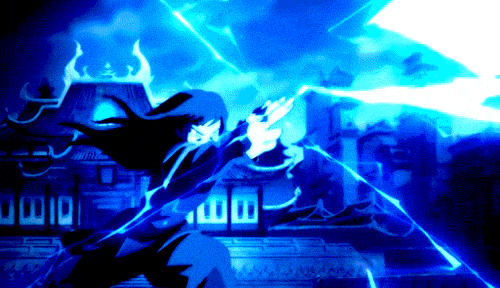
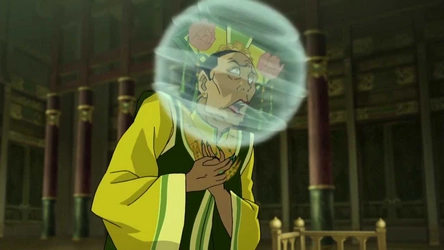
Harry Potter: Magic is basically limitless, with there being a spell to do pretty much anything and any wizard can learn it, including an instant-death spell.
Which is why fighters on both sides only ever go for the best and most effective spells (Avada Kedavra for bad guys, Expelliarmus for good guys) and magic battles look like this:
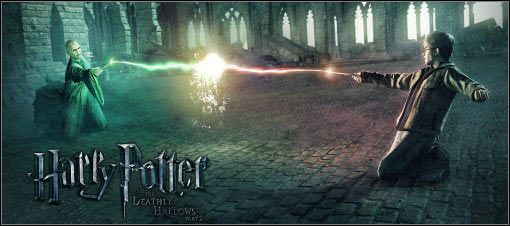
35K notes
·
View notes
Text
Limitations breed creativity
Avatar: Magic is limited to the four elements (and some spirit stuff). Furthermore, everyone except the Avatar is limited to at most just one element.
The magic battles are spectacular displays of creativity where each element is utilized to its full potential in a variety of ways.




Harry Potter: Magic is basically limitless, with there being a spell to do pretty much anything and any wizard can learn it, including an instant-death spell.
Which is why fighters on both sides only ever go for the best and most effective spells (Avada Kedavra for bad guys, Expelliarmus for good guys) and magic battles look like this:

35K notes
·
View notes
Text
Here’s the stuff I, y’know, went to college for, but didn’t learn and couldn’t find a single class on
i’ve been doing my homework on how to break into a writing career and honestly. there’s a Lot that i didn’t know about thats critical to a writing career in this day and age, and on the one hand, its understandable because we’re experiencing a massive cultural shift, but on the other hand, writers who do not have formal training in school or don’t have the connections to learn more via social osmosis end up extremely out of loop and working at a disadvantage.
162K notes
·
View notes
Text
Trying to find the perfect name for a character, but you only have a vague idea of what you want, like “he feels like a 2-syllable kind of guy” or “It need a hard consonant at the end.”
129K notes
·
View notes
Text
we’re gonna write our novels and we’re gonna FINISH them and it’s gonna be GREAT and we’re gonna fall in love w it every time we read it.
8K notes
·
View notes
Text
Some of the best writing advice I ever got was if you’re stuck on a scene or a line, the problem is actually about 10 lines back and that’s saved me from writer’s block so many times.
93K notes
·
View notes
Text
Words to use instead of “walk”
1. Amble: walk easily and/or aimlessly
2. Bounce: walk energetically
3. Clump: walk heavily and/or clumsily
4. Falter: walk unsteadily
5. Foot it: depart or set off by walking
6. Footslog: walk through mud
7. Gimp: see limp
8. Hike: take a long walk, especially in a park or a wilderness area
9. Hobble: walk unsteadily or with difficulty; see also limp
10. Hoof it: see “foot it”
11. Leg it: see “foot it”
12. Limp: walk unsteadily because of injury, especially favoring one leg; see also falter
13. Lumber: walk slowly and heavily
14. Lurch: walk slowly but with sudden movements, or furtively
15. March: walk rhythmically alone or in a group according to a specified procedure
16. Mince: walk delicately
17. Mosey: see amble; also, used colloquially in the phrase “mosey along”
18. Nip: walk briskly or lightly; also used colloquially in the phrase “nip (on) over” to refer to a brief walk to a certain destination, as if on an errand
19. Pace: walk precisely to mark off a distance, or walk intently or nervously, especially back and forth
20. Parade: walk ostentatiously, as if to show off
21. Perambulate: see stroll; also, travel on foot, or walk to inspect or measure a boundary
22. Peregrinate: walk, especially to travel
23. Plod: walk slowly and heavily, as if reluctant or weary
24. Pound: see lumber
25. Power walk: walk briskly for fitness
26. Prance: walk joyfully, as if dancing or skipping
27. Promenade: see parade
28. Pussyfoot: walk stealthily or warily (also, be noncommittal)
29. Ramble: walk or travel aimlessly (also, talk or write aimlessly, or grow wildly)
30. Roam: see ramble
31. Sashay: see parade
32. Saunter: to walk about easily
33. Scuff: to walk without lifting one’s feet
34. Shamble: see scuff
35. Shuffle: see scuff (also, mix, move around, or rearrange)
36. Stagger: walk unsteadily (also, confuse or hesitate, or shake)
37. Stalk: walk stealthily, as in pursuit
38. Step: walk, or place one’s foot or feet in a new position
39. Stomp: walk heavily, as if in anger
40. Stride: walk purposefully, with long steps
41. Stroll: see saunter
42. Strut: see parade
43. Stumble: walk clumsily or unsteadily, or trip
44. Stump: see lumber
45. Swagger: walk with aggressive self-confidence
46. Tiptoe: walk carefully on the toes or on the balls of the foot, as if in stealth
47. Toddle: see saunter and stagger; especially referring to the unsteady walk of a very young child
48. Totter: see stagger (also, sway or become unstable)
49. Traipse: walk lightly and/or aimlessly
50. Tramp: see lumber and hike
51. Trample: walk so as to crush something underfoot
52. Traverse: walk across or over a distance
53. Tread: walk slowly and steadily
54. Trip: walk lightly; see also stumble
55. Tromp: see lumber
56. Troop: walk in unison, or collectively
57. Trot: see nip
58. Trudge: see plod
59. Waddle: walk clumsily or as if burdened, swinging the body
60. Wander: see ramble
(From - DailyWritingTips)
0 notes
Text
some of y’all still can’t recognize the differences between platonic, romantic, sexual, mentor-student, and familial relationships, both in fiction and reality, and it really shows
230K notes
·
View notes
Text
Things to bring back in books:
Chapter titles
Actually having a synopsis on the back instead of reviews no one will read
334K notes
·
View notes
Photo
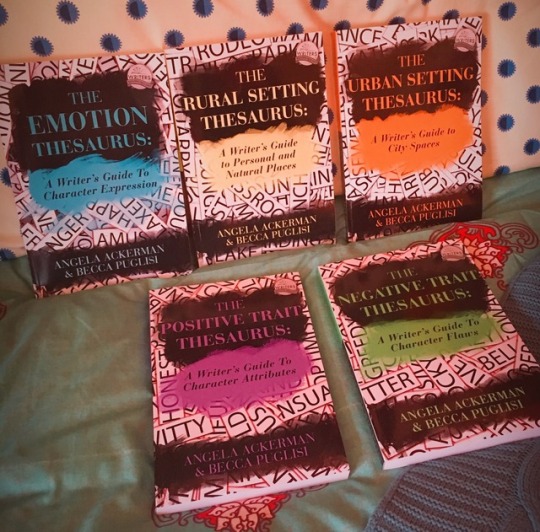

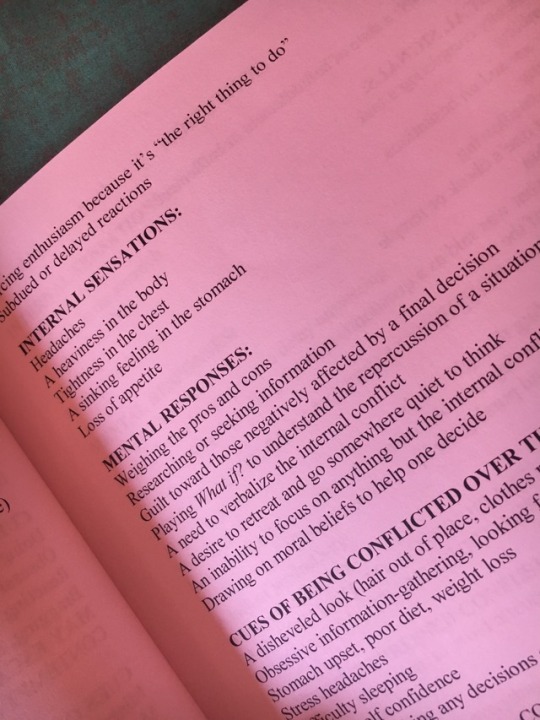
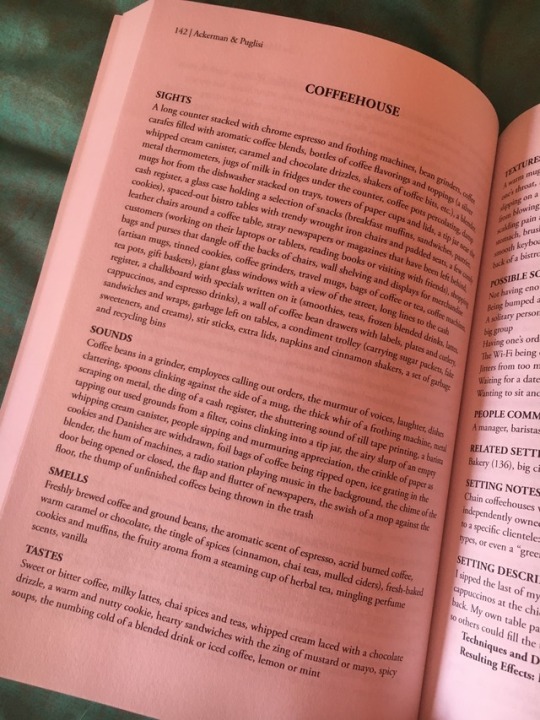
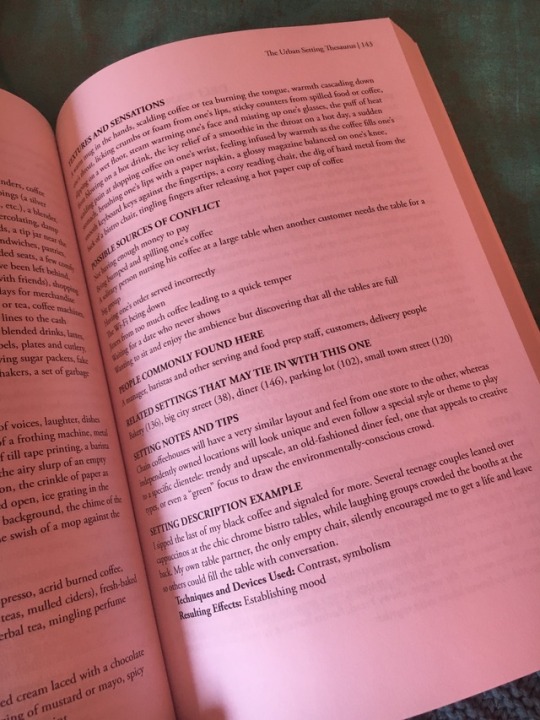
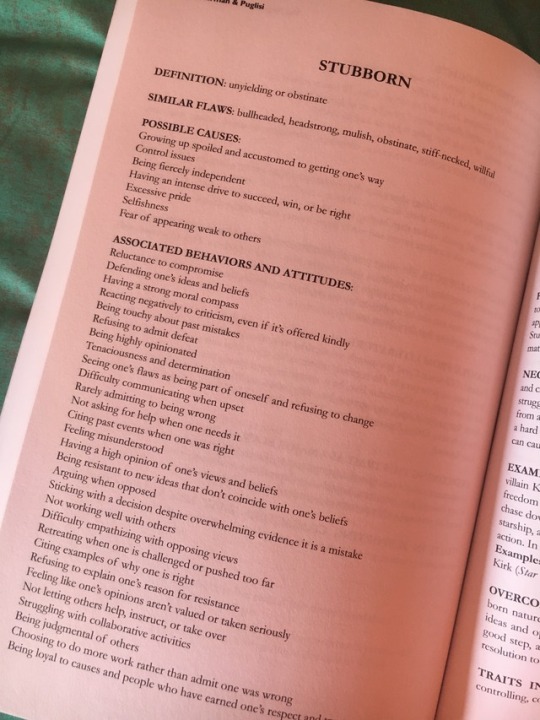
OKAY I have been meaning to do this for MONTHS but hey, there’s no better time than the present so buckle up, here we go! THESE BOOKS ARE A GODSEND. I am ALWAYS on the lookout for writing aids that ACTUALLY HELP. If you’re like me, and occasionally venture out to buy books on, let’s say, showing vs telling - you will always get the same rehearsed speeches on what that means. -summons pretentious writer’s voice- You’ve got to shoooooow what’s happening in the scene, not teeeeeeell~~ BAH! What you NEVER get, however, is how to do it, or how do it better.
THESE BOOKS ARE THE STUFF OF DREAMS
Each of these is so freaking helpful, I can’t even convey. They all follow the same format as the pictures I’ve shown above, so you get one detailed page of descriptions followed by tons of more in-depth, thought provoking concepts. I’ll do my best to lay out the five that I have and if you are interested, hop on over to Amazon and buy these suckers up because they are AMAZING; I have NEVER used a writing resource more than I use these. Negative Trait Thesaurus & Positive Trait Thesaurus -gives you a definition of said negative trait -gives you similar flaws also found in the book -gives you possible causes of WHY the character might have this trait -gives you a list of other behaviors the chara might have -gives you examples of the chara’s thought process -gives associated emotions -gives positive aspects of the trait, as well as negative -gives examples of well known chara’s that have this trait -talks about how the chara might overcome it -gives traits that, when combined with this one, might cause conflict How I use this information: Chara building, or when I get stuck on what I want a character to do. Man, I just can’t decide what they WOULD do. Well, awesome, I have a little guide to help me think through the character’s possible motivations. Also, I get help building a potential backstory because I get a framework of which to think, why is the character this way? Urban Setting Thesaurus & Rural Setting Thesaurus -gives a whole lot of examples of sights, smells, tastes, and sounds -gives examples of textures and sensations (ie at an ‘antique shop’ you may encounter chipped paint, distressed wood, etc) -gives you possible sources of conflict (ie at a ‘hotel’ you might have noisy neighbors) -gives list of people you might expect to find at said location -gives related settings -gives tips on this type of setting -gives a setting description example How I use this information: IMAGERY IMAGERY IMAGERY Emotion Thesaurus (aka MY FAVORITE) -gives a definition of the emotion -gives physical signs and signals (ie chara may look pale, might fidget, etc) -gives internal sensations (aka, blood pounding in the ears, dry throat, adrenaline rush) -gives mental responses (ie fight or flight) -gives cues of acute or long-term impacts of the emotion -gives ‘may escalate to _______’ and directs you to other emotions -gives cues of suppression (ie cues of suppressed rage) -gives writer tips How I use this information: I love this book so hardcore, it’s so helpful with internalizing. It’s great because I get to step outside of that box of using the same five responses to a certain emotion and start really thinking about, what can a character do instead to show that they are feeling this, rather than me using adverbs or his adrenaline pumped fifty gazillion times. These books are all co-written by Angela Ackerman and Becca Puglisi (bless their souls) and if this sounds of interest LOOK INTO IT!! I get such buyer’s regret after buying writing guides but these are legit the best ones I have found and I reference them so, so, so much. Hope this helps anyone out there looking for something life-changing!!
31K notes
·
View notes
Note
I wanted to write an indulgent story, where most of the characters were strong women. But as I was planning out a story, (a fantasy one where only women have magic) I realized that what a white woman wants to see in a strong woman might be different from anyone else, but I have no idea how to research that. Do you have any advice? (Sorry if this is worded awful! I hope you understand but it’s alright if you don’t.)
Writing Powerful Women of All Races
It’s great that you recognize that women’s representation is not one size fits all. What makes for good representation for white women is not the same for Women of Color.
Let’s consider how society handles women across the board:
White Women:
Traditionally, white women are treated as delicate beings, meant to be protected and romanced by men. White women are the standard of femininity and beauty. Women of Color can be attractive, too, but in a “different” way. Most positive roles for white women depict them breaking from these definitions, either embracing sexual labels or evading them by throwing out the need to be dolled-up, gentle, or in a relationship.
Even these problems come with privilege as there is this need to “dirty” oneself up and prove physical and emotional strength.
Anger in white women is seen as powerful. Anger in non-white women is either sexualized (see: the Spicy Latina) or seen as hostility and bitterness typical of their race (see: the Angry Black Woman).
White women embracing sexuality and the “Slut” role is groundbreaking. That doesn’t always translate well for WoC who are inherently seen as overly sexual and impure, and have the highest rates of sexual assault to show for it.
Black Women:
Black women are most often placed into the role of strong and independent, with an emotional and physical hardness that resists love and tenderness. They don’t need support, but they’ll be more than willing to use their backs to uplift others, no matter the gender, all and any races. Black women are rarely portrayed with classical softness or femininity. Note how Black women are so hard and impenetrable…except when it comes to helping everyone but themselves. Then they are your Mammy, warm and lovable and always there to support you, despite how much self-care they must neglect.
Asian Women:
Comparably, Asian women, especially East Asian women but other Asian women are affected too, are placed in juxtaposition to Black women. Asian women are fragile and need shielding, but that comes with a sinister dose of fetishization. They are often viewed as submissive, and are given gross comparisons to dolls as if items to place on display and control. They’re desirable, but in an “exotifc” way, and of course are not seen to have the same worth as white women.
This is often depicted in works, both old and modern: The white man falls in love with the Asian woman. After he’s had his fun, he abandons her to settle down with a white woman. The Asian woman ends her life as it is worth nothing without him.
On the flip side: Asian women are fragile and worth protecting…except when they’re not. The Dragon Lady stereotype features Asian women (Mainly East Asian) who manipulate and dominate others. This stereotype is often depicted by them dominating white men for Yellow Peril ends.
Native women:
Native women are seen as simple and animalistic, their “simpler” culture relating to “primal” needs. The narrative starts with Pocahontas, a scantily clad Disney princess who shows a white settler the wonders of the “natural” world, and continues all throughout Halloween costumes, Noble Savage, and Animalistic Natives. This very exact fetishization makes them prime targets for toxic masculinity’s view that women actively desire the more “beastly”/forcible sex, basically assuming Native women will behave like animals in heat— because that’s what society believes Natives are: a type of animal.
Women of Color:
Although this is grouping a number of women into one, they share a common thread of being exotified and fetishized. From the Spicy Latina to the brown-skinned temptress. They’re fun and sexy, and on the same hand promiscuous and impure. WoC are often portrayed as mistresses and homewreckers.
Women of Color are treated as Other, and are rarely the default. Notice in media that there’s a reluctance to call Women of Color beautiful. Words like “Striking” “Stunning” and “Exotic” are often used in its place, with an overemphasis on certain features more common to the ethnicity. And when they are more certainly called attractive, you’ll often find qualifiers such as the Dark Beauty or “Pretty for a Black Girl.”
While there is a lot of desexualizing in association with Black women (e.g. mammy), there’s another side where a Black woman’s body (see: curves and full lips) are inherently sexual to the point where even teenagers are labeled as “ho’s” and “Thots” who seek to tempt men for simply wearing shorts.
It’s no wonder Women of Color are assaulted at the highest numbers. Native American women lead in those statistics, and are at risk for sexual assault at twice the rate of others. For more stats, follow the link: (X)
A shared thread between all of these Women of Color is that, more often in not, people will not be content with these women being anything but their expected stereotypes. Also, there’s often a grumble by racist audiences when WoC are presented in relationships outside of their own race, particularly if they go anywhere near beloved white characters.
It’s time to break free of limited, dated molds and make society uncomfortable.
How do I represent these women, respectively?
I love your story concept, with all of these women having powers. Just keep in mind: what will work as positive representation for your white women may not work for Women of Color. We all have different histories that inform the struggles we have in society and what counts as proper representation.
Develop characters without applying what works for white women to all women. That is White Feminism. Intersectional feminism exists to consider Women of Color + other marginalizations and their needs as well.
Create customized representation that uplifts each women.
Develop personalities that don’t play into stereotypes. Choose powers that reflect individuality for each woman, not what is assumed about Black women, Mexican women, etc. What we hear and see in media informs our creative thought process, so your first idea may not be the most fitting one. Brainstorm! As a starting point, do opposite of the stereotypes and go from there. At the same time, find a balance to avoid extremes.
For example, the fragile Asian woman’s opposing extreme is Dragon Lady. The Strong Black Woman’s opposing extreme leads to infantilization aka making her utterly helpless.
And even then! Consider that sometimes people do have traits that may seem stereotypical. If that’s the case, it’s your job as the author to show that there’s more to them. They are human and not a label.
You can be physically strong, and still bubble with kindness, emotional softness and femininity.
Pink nail polish does not weaken a punch, or define someone as too girly or weak. It means you like pink.
You can show emotional vulnerability, fall in love and be loved in return, and still remain powerful and whole without becoming the Strong Black Women.
You can be gentle and worthy of protection while having self-worth and confidence.
You can be sensual and desirable without becoming an exotic commodity, but instead someone who is more than sexual, is in control, and 100% deserving of respect.
You can also just not be sexual, but that shouldn’t mean void of love to give and receive in return.
More reading: Stereotyped vs Nuanced Characters and Audience Perception
Research
There’s many places for you to start your research, and tons of it has been written right here on this page as well as all across the web in articles, blogs, vlogs, books etc. Seek topics on representation and intersectional feminism for the races you wish to portray. The best sources are written by the same people you’re reading about. Check out our Stereotypes & Tropes Navigation and the TVTropes List so you can recognize the displeasing ways WoC have been represented so you can avoid or amend it, and showcase people the way they want to be represented.
I also recommend you check out POC Profiles for the types of representation people who have submitted here are asking for. The WWC mods have also written on the topic in the Mod Wishlist post.
–WWC
12K notes
·
View notes
Text
Five Ways to Unstick a Story
An action of the past catches up with the protagonist, and they have to work to clean up whatever they messed up.
Your side character reveals that they have some misgivings about what’s going on right now. They don’t trust the protagonist not to hurt themselves. They just don’t trust the protagonist.
Your protagonist doesn’t expect for a mental reaction to a previous experience to occur—but getting captured by the bad guys twice in a row can cause some mean traumatic responses.
Something happy occurs! Your characters get to rest for a couple of pages and you get to elaborate on their relationships. This works great if you want to break the reader’s hearts later.
Something bad occurs! Immediately! What are you going to do now that your protagonists worst (or second, or third worst) fear has happened? Guess that next part of your story has to get written—Quick!
Someone dies.
2K notes
·
View notes
Text
look, im just a slut for some magical exhaustion okay give me your whumpees overusing their magic and having physical repercussions from it, bloody noses, unable to stand, getting progressively weaker, utterly exhausted and spent !!
bonus points: if they know they are running low on magic but they have no choice but to keep using more until they just collapse
bonus bonus points: if their magic is somehow connected to their life force!!
31K notes
·
View notes
Text
Fic authors, ever wanted to hold your story in your hand like a published book? Well, I did some digging and I found a way to! The company just prints a single book, no editing, no marketing, no putting it on any official published book lists, so there’s no copyright issues here. It’s not publishing. It’s just printing like an actual book. Pretty cheap too, as far as I was able to see! So yeah! Go hold your fic in your hand as an actual book! I plan on doing it!
23K notes
·
View notes
